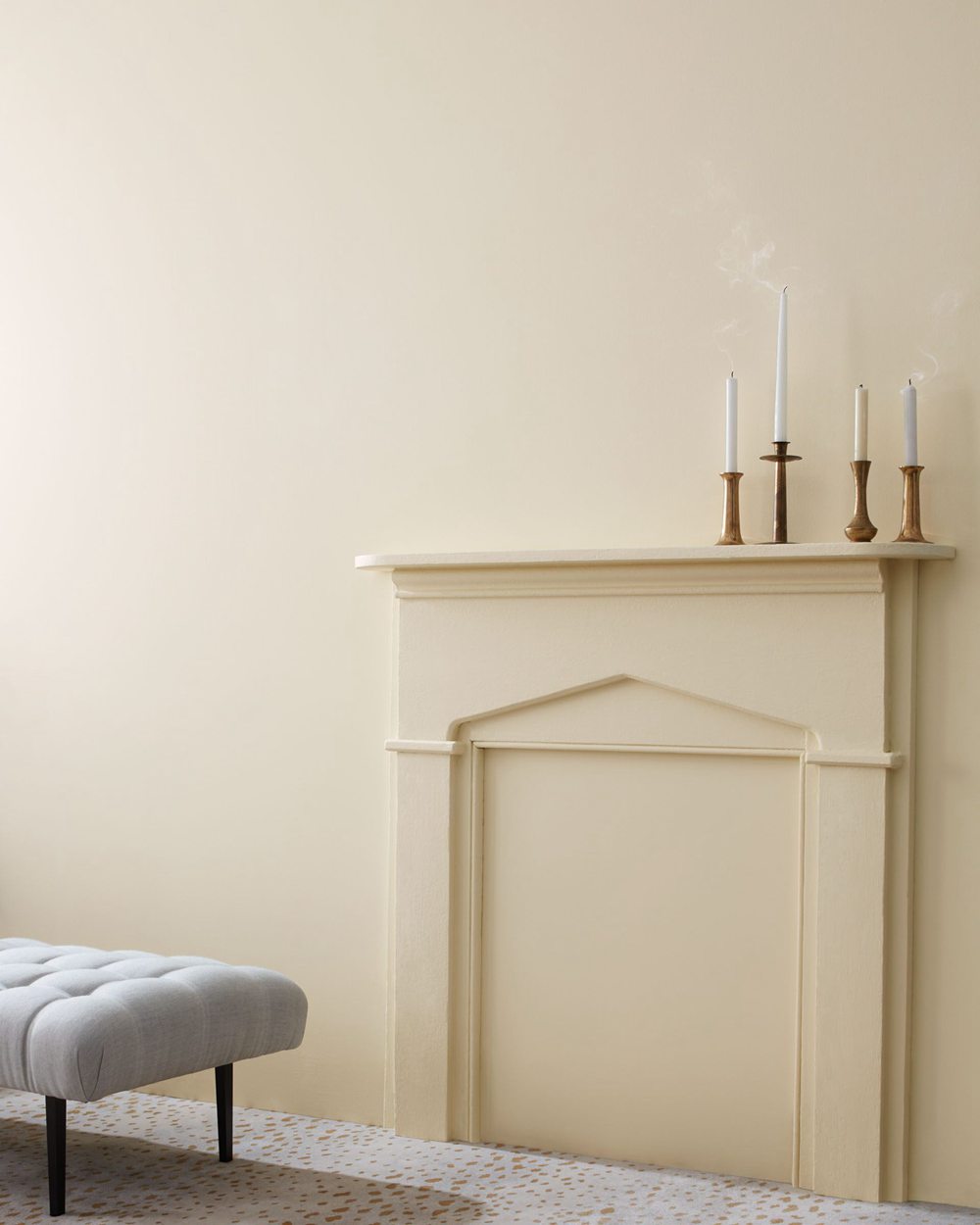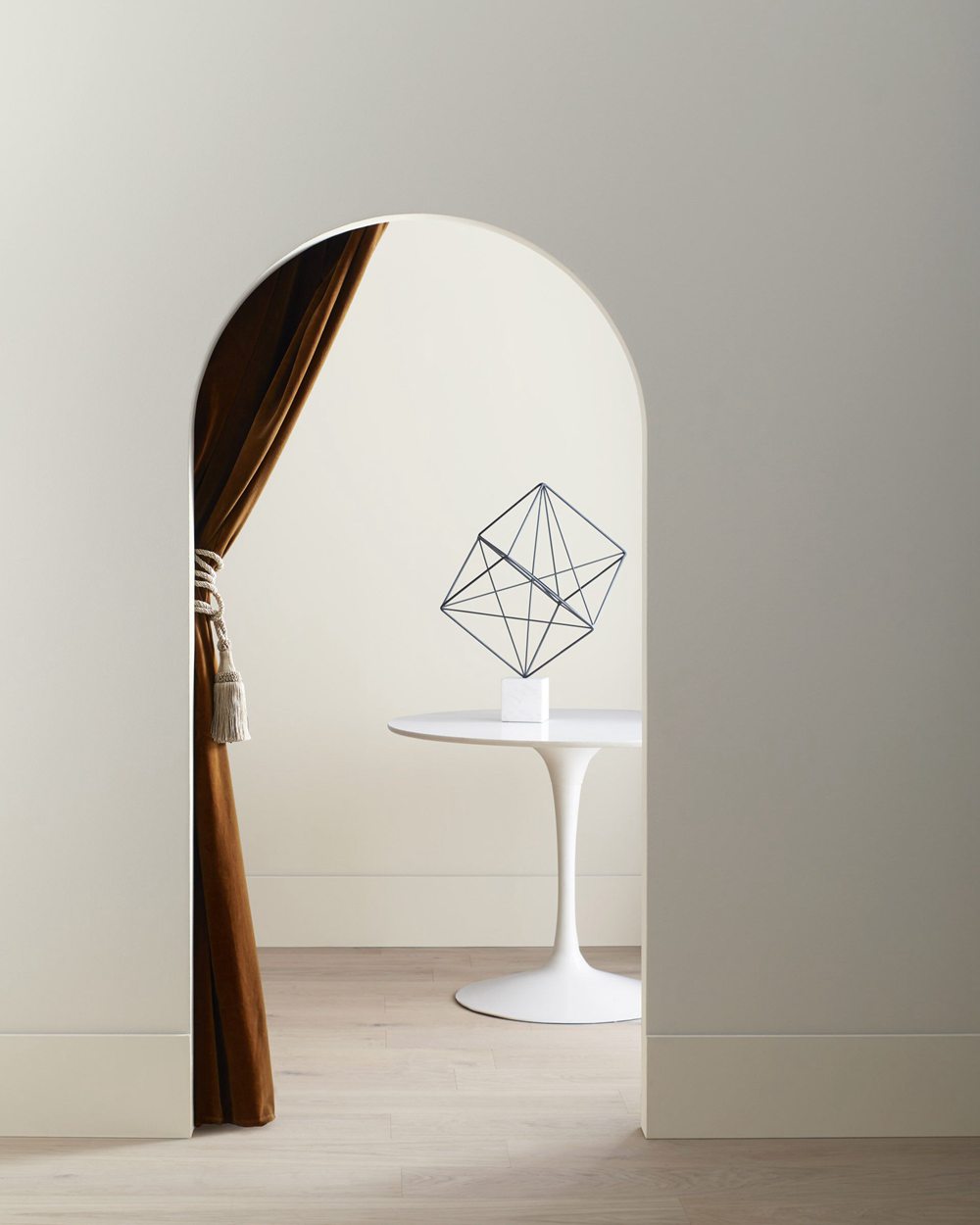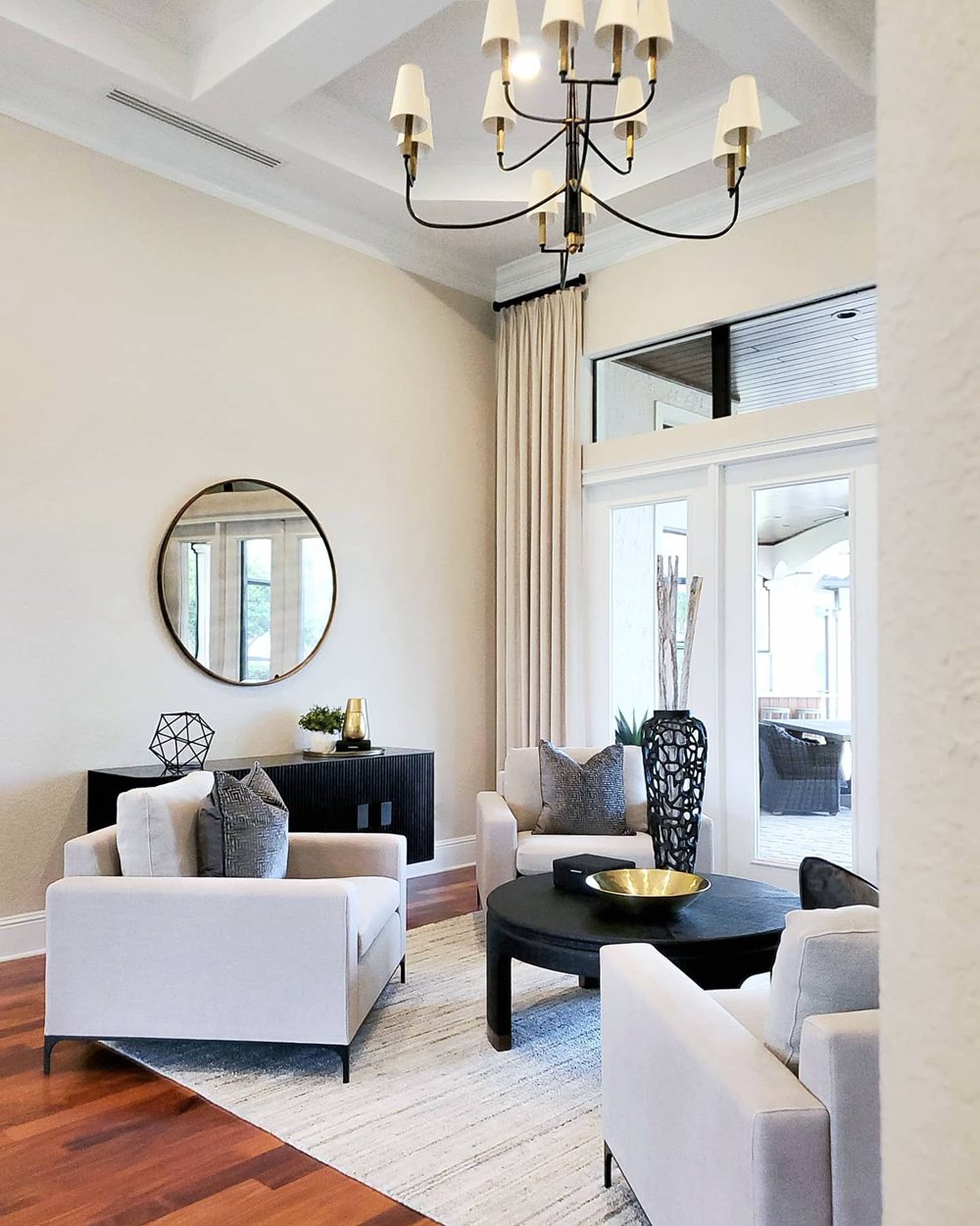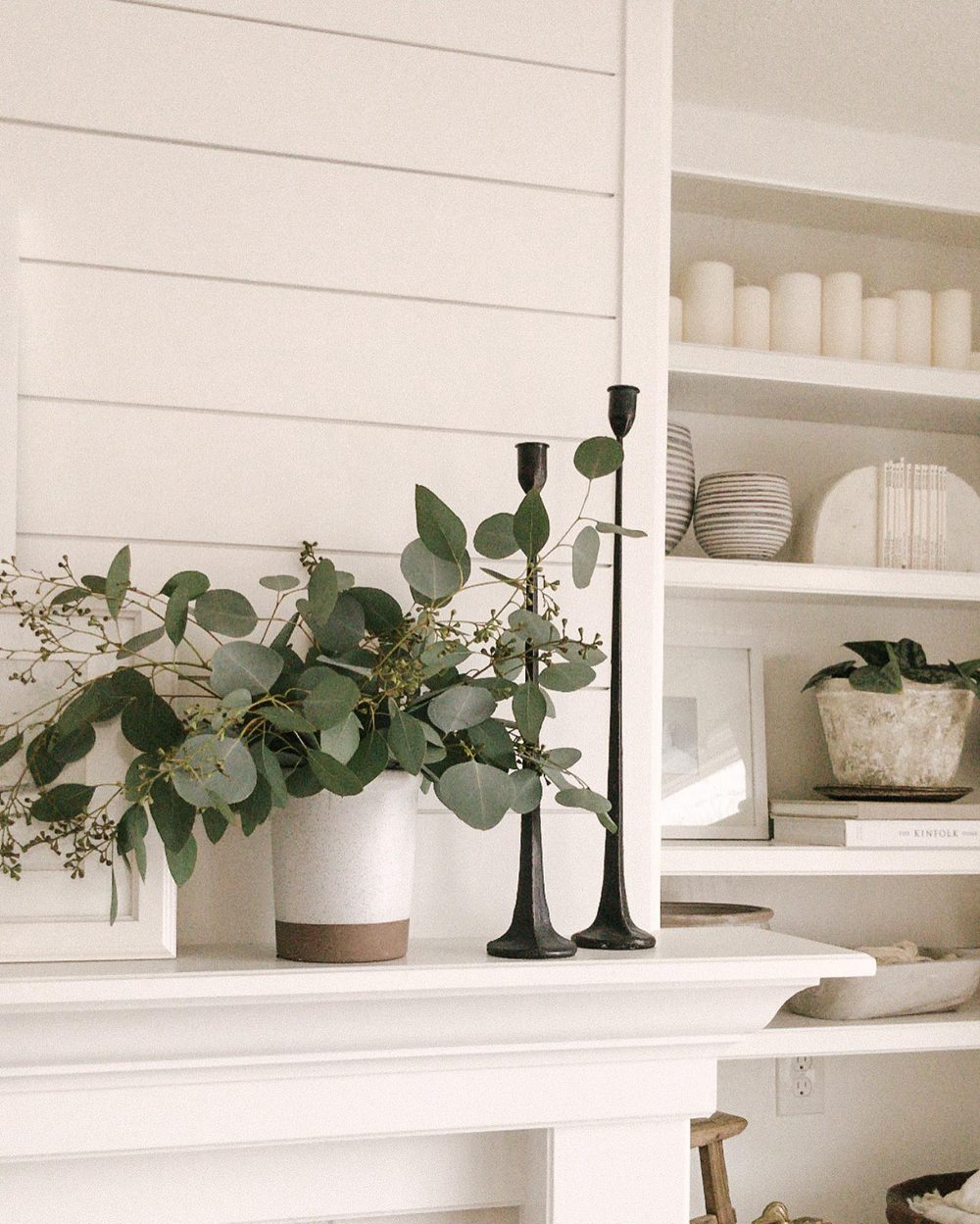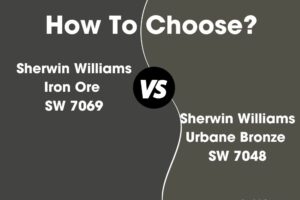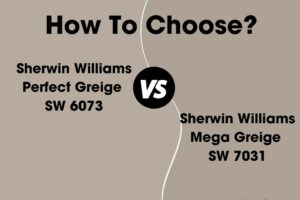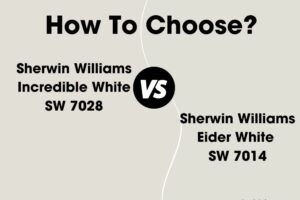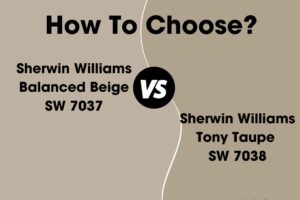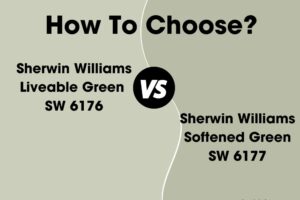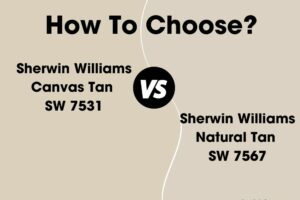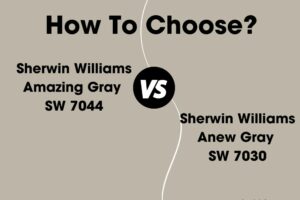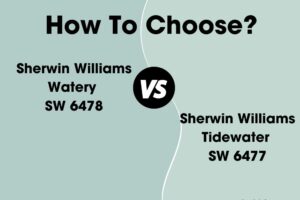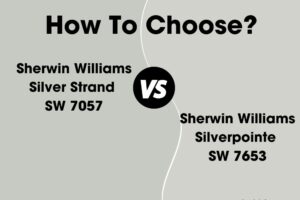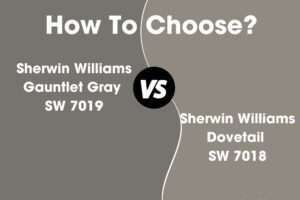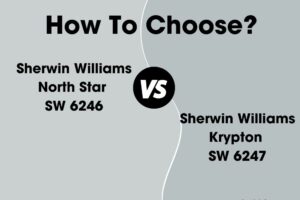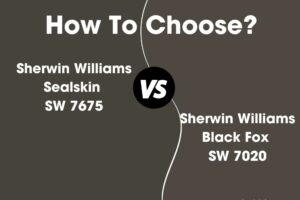Benjamin Moore offers gorgeous gray paint colors to suit any style and space. Two of their most popular neutral grays are Edgecomb Gray HC-173 and Classic Gray OC-23. Both create beautiful, versatile backdrops for any room. But what’s the difference between them and how do you choose?
In this in-depth guide, we’ll analyze Edgecomb Gray and Classic Gray. We’ll compare undertones, light reflectance values (LRV), aesthetics, real-life photos, and best room applications. Read on to determine whether Edgecomb Gray or Classic Gray is the best Benjamin Moore gray paint color for your home.
Table of Contents
Key Differences Between Edgecomb Gray and Classic Gray
Before diving into specifics, here is an overview of the main differences between Edgecomb Gray HC-173 and Classic Gray OC-23:
- Undertones – Edgecomb Gray has green-gray undertones, Classic Gray has blue-gray undertones
- Light Reflectance – Edgecomb Gray has an LRV of 63.09, Classic Gray has an LRV of 73.67
- Use – Edgecomb Gray complements traditional styles, Classic Gray contemporary styles
- Rooms – Edgecomb Gray excels in cozy rooms, Classic Gray in open concept areas
Now let’s explore Edgecomb Gray and Classic Gray more closely.
Benjamin Moore Edgecomb Gray HC-173
A bestselling neutral paint color, Edgecomb Gray HC-173 is a versatile warm gray that creates a relaxed, inviting backdrop. This adaptable color complements styles from modern to farmhouse.
Here are some details about Benjamin Moore Edgecomb Gray:
- LRV: 63.09
- Undertones: Green with brown tones
- Finish: Available in all sheens
- Rooms: Bedrooms, living rooms, offices
- Color Pairings: Tans, browns, blues
With distinct green undertones infused with subtle brown, Edgecomb Gray has a natural, organic appearance. Depending on lighting conditions, it can read as a soft sage green-gray or a deeper charcoal gray with greenish cast. This chameleon-like ability makes Edgecomb Gray highly versatile.
At 63.09 light reflectance, Edgecomb Gray reflects adequate light for most rooms without being too bright. The medium-dark gray creates a cozy ambiance perfect for bedrooms and other intimate spaces. Yet it isn’t too somber or dreary.
Edgecomb Gray works well across many interior design styles. Use it to create a relaxed, welcoming backdrop for spaces including:
- Bedrooms
- Living Rooms
- Dining Rooms
- Offices/studies
- Entryways
Some colors that coordinate beautifully with Edgecomb Gray are:
- Benjamin Moore White Dove
- Benjamin Moore Hale Navy
- Benjamin Moore Wythe Blue
- Benjamin Moore Desert Twilight
Benjamin Moore Classic Gray OC-23
As a bestselling neutral, Classic Gray OC-23 provides a versatile and welcoming backdrop for any space. This traditional yet contemporary gray has broad appeal.
Here are some details about Benjamin Moore Classic Gray:
- LRV: 73.67
- Undertones: Blue-gray
- Finish: Available in all finishes
- Rooms: Living rooms, kitchens, baths
- Color Pairings: Whites, blues, grays
Featuring soft blue-gray undertones, Classic Gray has a clean, refined appearance. In some lights it can read as a true medium gray. In others it takes on a slight blue cast. This makes Classic Gray highly versatile and adaptable.
At 73.67 light reflectance, Classic Gray reflects adequate light for most comfortable rooms. It provides pleasing contrast against white cabinetry, trim, and ceilings. The blue-gray nature gives Classic Gray a relaxed yet refined feel.
Use Classic Gray OC-23 to create a gorgeous backdrop that transitions seamlessly between traditional and contemporary styles. This flexible neutral excels in these rooms:
- Living Rooms
- Dining Rooms
- Kitchens
- Bathrooms
- Open concept spaces
Some colors that look beautiful with Classic Gray include:
- Benjamin Moore Chantilly Lace
- Benjamin Moore Hale Navy
- Benjamin Moore Gray Owl
- Benjamin Moore Simply White
Comparing Edgecomb Gray vs Classic Gray
Now that we’ve looked at Edgecomb Gray and Classic Gray individually, let’s compare them directly:
Light Reflectance
Edgecomb Gray and Classic Gray have very similar light reflectance values. At 63.09 LRV for Edgecomb Gray and 73.67 for Classic Gray, both reflect adequate light for most comfortable spaces.
Undertones
The main difference lies in undertones. Edgecomb Gray has green tones infused with brown. Classic Gray has blue-gray undertones.
Use
The green, organic Edgecomb Gray fits well with relaxed traditional designs. Classic Gray’s blue lends itself to contemporary, modern spaces.
Rooms
Edgecomb Gray’s warmth suits cozier bedrooms and offices. Classic Gray’s cool tones work well in open concept kitchens and baths.
Paint Finish
Benjamin Moore offers both Edgecomb Gray and Classic Gray in any sheen from flat to high-gloss.
Pairings
Edgecomb Gray coordinates beautifully with tans, browns, and blues. Classic Gray suits colors like white, gray, navy, and light blues.
Edgecomb Gray vs Classic Gray Comparison Chart
Here is an overview comparison between Edgecomb Gray HC-173 and Classic Gray OC-23:
| Paint Color | Edgecomb Gray HC-173 | Classic Gray OC-23 |
|---|---|---|
| LRV | 63.09 | 73.67 |
| Undertones | Green with brown | Blue-gray |
| Use | Traditional, relaxed | Contemporary, refined |
| Rooms | Bedrooms, offices | Open concept areas |
| Sheens | All finishes | All finishes |
| Pairings | Tans, browns, blues | Whites, grays, blues |
Real Life Photos: Edgecomb Gray vs Classic Gray
To give a sense of how Edgecomb Gray and Classic Gray compare in actual rooms, let’s look at real life photos:
Edgecomb Gray HC-173
Classic Gray OC-23
In real world applications, Edgecomb Gray comes across as slightly greener and warmer than the crisper, cooler Classic Gray. But lighting can impact their appearance. Overall, Edgecomb Gray reads more natural while Classic Gray seems more sophisticated.
Should I Choose Edgecomb Gray or Classic Gray?
So how do you decide between Edgecomb Gray vs Classic Gray for your home? Here are a few tips:
Consider Edgecomb Gray HC-173 if you want:
- A green-gray with natural, organic feel
- A cozy ambiance perfect for bedrooms
- To complement traditional and farmhouse styles
- To coordinate with tans, browns, and blues
Consider Classic Gray OC-23 if you want:
- A crisp gray with subtle blue undertones
- A versatile backdrop for contemporary styles
- To coordinate with whites, grays, and blues
- A refined look for open concept kitchens/baths
To decide, view large paint swatches in your space at different times of day. See how light affects their undertones and mood. Also paint samples on boards to compare directly in your planned environment.
While beautiful grays, Edgecomb Gray leans traditional for cozy spaces, and Classic Gray contemporary for airy open plans. Choose what best suits your goals.
Best Rooms for Edgecomb Gray and Classic Gray
Here are rooms that Edgecomb Gray HC-173 and Classic Gray OC-23 are often perfectly suited for:
Edgecomb Gray HC-173
- Bedrooms
- Offices
- Living Rooms
- Dining Rooms
- Libraries
Classic Gray OC-23
- Living Rooms
- Kitchens
- Bathrooms
- Hallways
- Open floor plans
Of course, both can work well in any space. But the above are ideal applications that take advantage of Edgecomb Gray’s coziness and Classic Gray’s contemporary adaptability.
Design Ideas for Using Edgecomb Gray and Classic Gray
On their own Edgecomb Gray and Classic Gray create simple cohesive backdrops. Use other paint colors, materials, and decor to make the spaces unique:
Edgecomb Gray Color Pairings
- Benjamin Moore Chantilly Lace (trim/ceilings)
- Benjamin Moore Wythe Blue (accent wall)
- Matte black hardware and fixtures
- Aged oak or walnut wood tones
Classic Gray Color Pairings
- Benjamin Moore White Dove (trim/cabinets)
- Benjamin Moore Hale Navy (front door)
- Polished chrome fixtures
- Large format porcelain tile
Edgecomb Gray vs Classic Gray: Which is Better for Your Home?
Is Edgecomb Gray or Classic Gray the better Benjamin Moore gray paint color for your space? The answer depends on your home goals and style:
Consider Edgecomb Gray if you want:
- A lush green-influenced gray
- Warm coziness for bedrooms and offices
- To complement traditional and transitional décor
- A relaxed organic ambiance
Consider Classic Gray if you want:
- A versatile gray with subtle blue tones
- Crisp, cool contrast in open concept plans
- A backdrop that transitions from modern to traditional
- An adaptable “greige” alternative
Edgecomb Gray excels in cozy, intimate spaces where traditional warmth is desired. Classic Gray suits airy open concept areas where you want a relaxed yet refined backdrop.
Be sure to view large paint samples in your space before deciding. Both are stunning Benjamin Moore grays that provide gorgeous versatility. Choose the one best aligned with your goals for the room.
Frequently Asked Questions (FAQ)
Still undecided between Edgecomb Gray vs Classic Gray? Here are answers to some frequently asked questions:
What are the main differences between Edgecomb Gray and Classic Gray?
The main differences are their undertones and aesthetic mood. Edgecomb Gray has green undertones and feels more natural and cozy. Classic Gray has blue undertones and feels crisper and cooler.
Does Edgecomb Gray have brown in it?
Yes, Edgecomb Gray has subtle brown tones mixed with its predominant green-gray. These warm brown undertones contribute to its natural, organic look.
What colors complement Classic Gray?
Classic Gray works well with whites like Chantilly Lace, grays like Gray Owl, and blues like Hale Navy. Its versatility allows coordination with either cool or warm palettes.
Is Edgecomb Gray too dark for a living room?
It depends on the size and lighting. In smaller living rooms it may feel too dark. But in larger well-lit spaces, the 63.09 LRV creates desired coziness without feeling overly somber.
Can you use Classic Gray in a bathroom?
Yes, Classic Gray makes a gorgeous bathroom color. The soothing blue-gray tones complement white tile and fixtures, and its 73.67 LRV prevents the space from feeling too dark.



